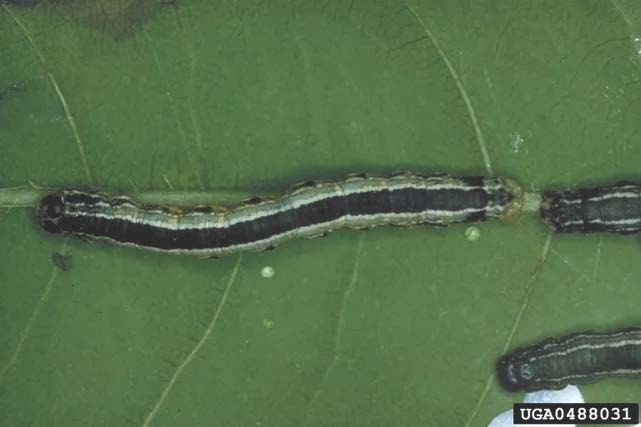Posted: June 3, 2024
Identification and research-based treatment options

Fall Cankerworm photo by John Ghent, Bugwood.org
Last year wooded areas in Somerset County suffered a particularly bad infestation of the Fall Cankerworm. By the time we heard about these isolated infestations in the Extension Office, the cankerworms were descending from the trees as mature cankerworms and the tops of the trees had been eaten away. Unfortunately, the Fall Cankerworm has completed its damage and our intervention is ineffective. This year, the infestation spread throughout northern Somerset County and into Fayette and Westmoreland Counties.
When trying to control the damage caused by this pest, it is important to understand its life cycle. Fall cankerworms, also called inchworms, are a common pest in North America. The Fall Cankerworm is the larval stage of the adult geometer moth. As newly hatched larvae, they feed on developing leaves of many trees such as elm, ash, birch, maple and oak. The younger the pest, the more appealing the youngest leaves will be. As they move to their next stage of development, the worms drop by silken threads to the ground where they form their pupal stage and burrow into the ground. In late autumn, they identify as adult moths. The wingless female will crawl up the tree to mate with the winged adult male, laying eggs on twigs and branches of the tree. The eggs overwinter and hatch into cankerworms in mid-April to early May. There is some effectiveness in making a barrier around your most prized trees before the fall temperatures drop. It will stop the females from crawling up the tree to deposit the eggs.
The most effective agent to spray is the biological insecticide Bacillus thuringiensis or (Bt). It is a contact pesticide, meaning you must spray the cankerworms directly with the spray. The spray is most effective at the beginning of the feeding cycle (late April – early May) while the Fall cankerworms are actively feeding and still small (less than ½ inch). They may not fall from your trees as soon as you apply the spray. Bt works by acting on the inside of the worm and killing them over a short period of time.
When applying any pesticide spray, please follow the directions carefully and spray during the early morning or early evening hours when pollinators are not out. Most pesticides, present a specific danger to pollinators, and should be avoided. Bt is a much safer and a more effective alternative to deter Fall cankerworms from defoliating trees.
It is role of Penn State Extension to provide you with research-based information. Below are links to articles published by Penn State Extension and the USDA Forest Service so you may make informed decisions with regard to your property.

